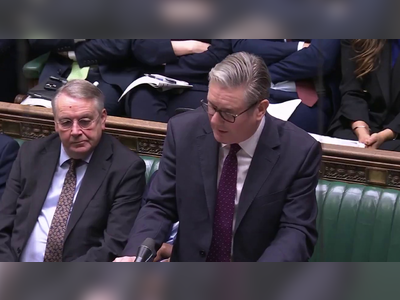Ireland’s Inflation Dips Amid Hopeful Yet Perilous Economic Strategies
Amid political and economic uncertainties, the European Central Bank’s interest rate cuts aim to stimulate growth while balancing future risks.
In the intricate economic dance that has characterized Europe's post-pandemic recovery, Ireland stands out with its nuanced portrait of inflation—a mere 1% increase over the past year according to the Central Statistics Office.
This is a slight increase from October's 0.7%, yet a far cry from the towering 9.2% inflation rate of two years prior, driven by energy crises and geopolitical tensions following the pandemic and the conflict in Ukraine.
Intriguingly, this tempered inflation rate belies considerable sectoral variances.
The hospitality industry, vital to Ireland's cultural and economic identity, has endured the most pronounced pricing pressures, with a 3.8% rise reflecting persistent high food costs.
Such inflationary pressures palpably impact day-to-day life, making dining out a heftier expense for consumers.
Yet, while inflation looms large in the minds of Irish consumers, the broader economic implications of the European Central Bank’s (ECB) monetary policies could change the landscape significantly.
The ECB's strategic decision to lower interest rates to 3% aims to breathe life into a sluggish economy by making borrowing cheaper.
This move seeks to spur spending and business investments, potentially catalyzing a renaissance in Irish business activities.
Businesses stand to benefit from lower debt burdens and could redirect their energies towards innovation and expansion.
However, the appeal to businesses might come with a caveat for savers, who face diminished returns on their deposits.
This aggressive monetary stimulus, however, is fraught with potential complications.
Global economic conditions are exceptionally fluid, with the specter of U.S. tariffs and political unpredictability casting long shadows.
These external factors could undermine the intended stimulus effects of lower interest rates, making economic stabilization a challenging task.
Furthermore, the ECB's consideration of further rate cuts to as low as 1.5% presents a delicate balancing act.
While such measures may heighten investment confidence, there is a risk of engendering a fragile economic structure overly reliant on cheap credit.
Excessive dependence on low borrowing costs could leave the economy vulnerable, especially if unforeseen financial shocks arise.
Thus, Ireland’s economic policymakers must tread carefully, balancing short-term growth ambitions with long-term stability imperatives.
This is a vital discourse not only for Ireland but for broader Europe as it navigates a post-pandemic global economy replete with uncertainty.
As Franklin D. Roosevelt aptly noted, 'The only limit to our realization of tomorrow will be our doubts of today.' In these times, such wisdom calls for prudent economic stewardship, mindful of both opportunities and potential pitfalls.
As observers and stakeholders engage with these economic challenges, the question remains: Are the current paths of inflation management and interest rate adjustments the correct ones, or do they require recalibration?
Ireland’s journey to economic resilience continues, inviting an open dialogue among policymakers, businesses, and citizens alike.
This is a slight increase from October's 0.7%, yet a far cry from the towering 9.2% inflation rate of two years prior, driven by energy crises and geopolitical tensions following the pandemic and the conflict in Ukraine.
Intriguingly, this tempered inflation rate belies considerable sectoral variances.
The hospitality industry, vital to Ireland's cultural and economic identity, has endured the most pronounced pricing pressures, with a 3.8% rise reflecting persistent high food costs.
Such inflationary pressures palpably impact day-to-day life, making dining out a heftier expense for consumers.
Yet, while inflation looms large in the minds of Irish consumers, the broader economic implications of the European Central Bank’s (ECB) monetary policies could change the landscape significantly.
The ECB's strategic decision to lower interest rates to 3% aims to breathe life into a sluggish economy by making borrowing cheaper.
This move seeks to spur spending and business investments, potentially catalyzing a renaissance in Irish business activities.
Businesses stand to benefit from lower debt burdens and could redirect their energies towards innovation and expansion.
However, the appeal to businesses might come with a caveat for savers, who face diminished returns on their deposits.
This aggressive monetary stimulus, however, is fraught with potential complications.
Global economic conditions are exceptionally fluid, with the specter of U.S. tariffs and political unpredictability casting long shadows.
These external factors could undermine the intended stimulus effects of lower interest rates, making economic stabilization a challenging task.
Furthermore, the ECB's consideration of further rate cuts to as low as 1.5% presents a delicate balancing act.
While such measures may heighten investment confidence, there is a risk of engendering a fragile economic structure overly reliant on cheap credit.
Excessive dependence on low borrowing costs could leave the economy vulnerable, especially if unforeseen financial shocks arise.
Thus, Ireland’s economic policymakers must tread carefully, balancing short-term growth ambitions with long-term stability imperatives.
This is a vital discourse not only for Ireland but for broader Europe as it navigates a post-pandemic global economy replete with uncertainty.
As Franklin D. Roosevelt aptly noted, 'The only limit to our realization of tomorrow will be our doubts of today.' In these times, such wisdom calls for prudent economic stewardship, mindful of both opportunities and potential pitfalls.
As observers and stakeholders engage with these economic challenges, the question remains: Are the current paths of inflation management and interest rate adjustments the correct ones, or do they require recalibration?
Ireland’s journey to economic resilience continues, inviting an open dialogue among policymakers, businesses, and citizens alike.











